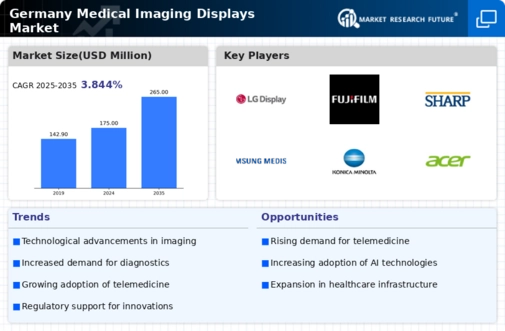The Germany Medical Imaging Displays Market is witnessing a significant shift towards higher resolutions and better image quality, primarily driven by advancements in technology and the growing demand for accurate diagnostics. The German healthcare system emphasizes quality healthcare services, resulting in an uptick in the adoption of high-performance imaging displays in hospitals and clinics.
Additionally, with the increasing prevalence of chronic diseases and an aging population, healthcare facilities are making investments to enhance diagnostic capabilities, thereby fueling the need for sophisticated imaging solutions. Moreover, there are ample opportunities to be explored in telemedicine and remote diagnostics.
The COVID-19 pandemic has accelerated the integration of telehealth services, prompting the need for efficient imaging displays that can be utilized in remote consultations. This shift aligns with the German government's initiative to digitize healthcare, thus creating an environment ripe for growth in the medical imaging displays sector.
Trends such as the enhanced focus on ergonomic designs and user-centered functionalities in medical imaging displays are becoming more prominent. German medical institutions are prioritizing the comfort and efficiency of their healthcare providers, leading to innovations in display technologies that improve usability and reduce eye strain during prolonged usage.
Furthermore, as environmental considerations become more crucial, there is a growing trend towards energy-efficient displays that comply with Germany's strict sustainability regulations. This strategic alignment with eco-friendly practices not only fulfills regulatory requirements but also appeals to the eco-conscious ethos of many German consumers and institutions.
Overall, the medical imaging display market in Germany is evolving rapidly, reflecting a blend of technology, user-centric design, and a strong commitment to sustainability.






















Leave a Comment